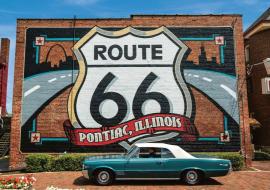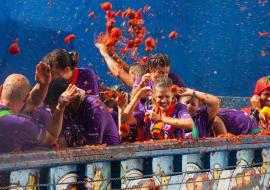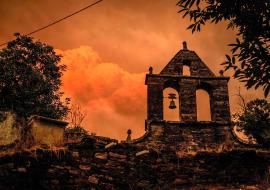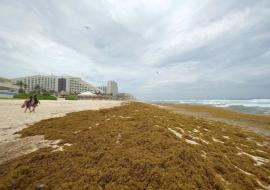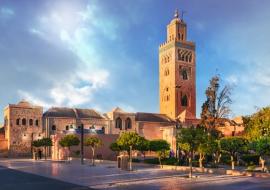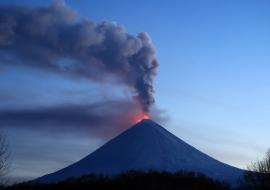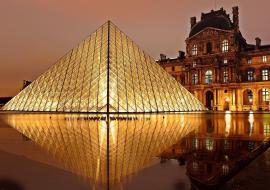Antonio Bravo Correoso Cultural Commercial Complex Undergoes Restoration
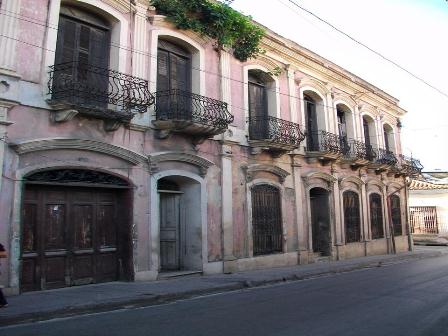
The colonial house of the Arts and Sciences Association in Santiago de Cuba –near Cespedes Park – already shows cosmetic modifications that shed light on its century-old characteristics. The formwork and paneling of a brand-new multifunctional Hall are included in the list of works that are being carried out at this ancient epicenter of art and intellectualness. Creation Idols group, from Granma, is in charge of carefully reviving that foundational essence promoted by jurist Antonio Bravo Correoso.
Click on Santiago de Cuba: A City of 500 Years
Fidel Rodriguez, representative of the restorer group explained that they are working on the cover of the second floor in an effort to preserve the cultural and decorative heritage that identifies the house. Both false ceiling and floor have been restored by these specialists, who use old pictures to exquisitely repair each fragment of the property that was devastated by hurricane Sandy.
The Moorish atmosphere and furnishings date back from 1914 and are being presently restored by different groups of interior decorators.
Ornamental replicas with plaster moldings, plastering with papier-mâché, as well as decoration of mosaics, ironworks and bronze lamps speak of the meticulousness of the works.
All details are important to the future of the cultural commercial complex. This place, also the seat of the Cultural Assets Fund, prepares one of its two areas to be a craftworks marketplace.
The first floor is being prepared with marketing objectives, according to Hipolito Lobaina, who is in charge of the Fund’s Communication and Image. The property is also going to feature a cafeteria and gastronomic areas with different services. The backyard will be the perfect stage for concerts and fashion shows. Textiles expressions are going to be showcased in this area, as this is a traditional activity.
The works include a gallery to exhibit pieces created by different artists and, of course, the space that will be dedicated to the commercialization of different craftworks produced in the territory.
The second floor, according to the plan, is going to house different offices, a terrace and a large multipurpose hall for different projects. Hipolito explained that this area will be more specialized in conferences and small-format concerts with important presence of coral, lyric and instrumental music.
State-of-the-art elements are combined with centenarian aesthetics from the gallery to the multipurpose hall. Santiago de Cuba brings past glories back to its cultural scenery.
Past Glories
The origins of the arts and sciences movement in the Eastern region of Cuba date back to the 70s decade, 19th century. In his Chronicles of Santiago de Cuba, Emilio Bacardí mentions the attempts to create an Arts and Sciences Association in late 1878, when a group of distinguished intellectuals asked the Spanish governor his authorization to found a “Scientific, Artistic and Literary Association”.
Santiago de Cuba’s Arts and Sciences Association was founded on September 6, 1914.
This association developed such activities as informative conferences, artistic or funereal soirees, patriotic activities, paid tribute to important figures, historic or cultural events, city intellectuals; as well as conferences on cultural, historic and scientific promotion.
The Association was the cultural heart of the city and it efficiently contributed to the enrichment of Cuban culture, as it gathered intellectuals in coherent and organized cultural activities. It fostered the creation of similar institutions in every city and town in the eastern region.
Bravo Correoso is a regrettably forgotten figure, whose life is worth to be honored. His vocation had an important impact since the very beginning of this institution in 1914 when he chaired the Legal Sciences section, where he carried out an outstanding work as a lecturer for two years.
In 1916 he was appointed head of the Association with the Third Executive Board, until 1917 when Emilio Bacardí Moreau took office and he continued his work by promoting local culture. That’s the reason why his name was chosen, since it stands for an honorable, patriotic and Cuban generation.
The protocol hall at Antonio Maceo Revolution Square was the venue of this ceremony, with the enthusiasm and determination of intellectuals interested in having a civilian and non-governmental institution to promote Cuban culture, especially in the eastern territory.
The Statutes and Rules were read during the event, put to the vote and unanimously approved by the 206 attendees.
Antonio Bravo Correoso Arts and Sciences Association was the first of its kind founded after the triumph of the Revolution. Its Executive Board, chaired by Eliades Acosta Matos, included professor Olga Portuondo and painter Carlos René Aguilera Tamayo as vice presidents, and painter Antonio Ferrer Cabello, Guillermo Orozco and members. Miguel A. Botalín, another Santiago-born prestigious intellectual, was appointed commissioner.
This institution didn’t put aside the role played by other organizations (governmental or social). Among its national and foreign members we can mention Ramona Ruíz Bravo, María Ruíz Bravo and José Ruíz Bravo, relatives of Antonio Bravo Correoso; as well as Commander in Chief Fidel Castro, the Minister of the Revolutionary Armed Forces at the time, Raúl Castro; Commander of the Revolution Juan Almeida Bosque; Minister of Culture Armando Hart Dávalos and professor and essayist José A. Portuondo.
With a philosophy of integration and confluence atmosphere, exchange of ideas and initiatives, this institution counted on 200 members at the beginning, a number that grew up as the cultural projects were successful and channeled its spirit.








